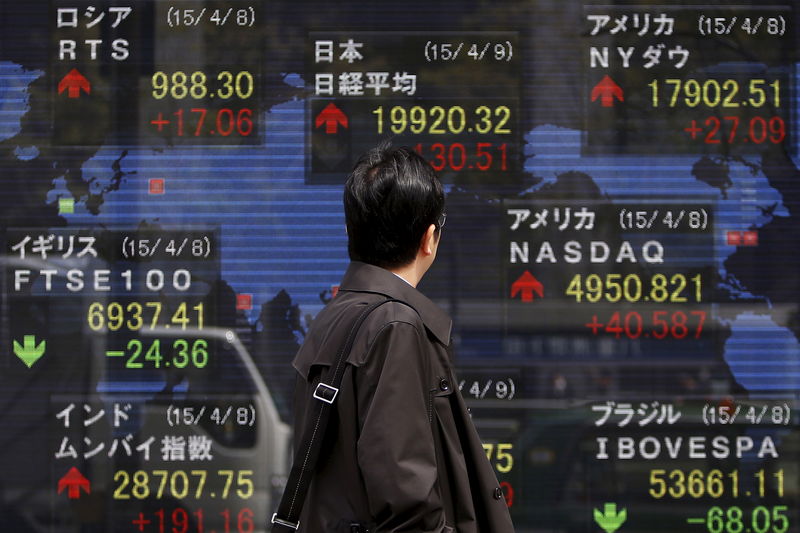This post was originally published on this site
https://i-invdn-com.investing.com/news/LYNXMPEB380HB_M.jpg
Investing.com – Asia Pacific stocks were mostly up Wednesday morning, with Australia reporting a better-than-expected GDP. Investors also remain concerned about the U.S. Federal Reserve withdrawing stimulus measures earlier than expected as the economic recovery from COVID-19 continues ahead of economic data due to be released on Friday.
In Australia, the ASX 200 rose 0.77% by 10:49 AM ET (2:49 AM GMT). Data released earlier in the day said that Gross Domestic Product grew 1.8% quarter-on-quarter and 1.1% year-on-year for the first quarter of 2021.
South Korea’s KOSPI edged up 0.18%, with the country’s Consumer Price Index rising 2.6% year-on-year in May, above April’s 2.3% growth.
Japan’s Nikkei 225 rose 0.48% and Hong Kong’sHang Seng Index inched down 0.06%.
China’s Shanghai Composite fell 0.46% while the Shenzhen Component inched up 0.07%. The offshore yuan remained unchanged after the People’s Bank of China forced banks to hold more foreign currencies in reserve in order to stem the yuan’s surge.
Investors remain concerned that central banks will pair back their stimulus measures earlier than expected due to the ongoing economic recovery from COVID-19 in the U.S., China, and parts of Europe.
In the U.S., data released on Tuesday said the Institute of Supply Management (ISM) Manufacturing Purchasing Managers Index (PMI) rose 61.2 in May, higher than the 60.9 figure in forecasts prepared by investing.com and April’s 60.7 reading. However, it also indicated supply shortages and labor constraints.
The labor shortage has hindered the ongoing economic recovery from COVID-19 in the U.S., according to U.S. Federal Reserve governor Lael Brainard, who added “for all these reasons, the supply–demand mismatches in the labor market are likely to be temporary, and I expect to see further progress on employment in coming months.”
Brainard also reiterated that the central bank is not set to change its current dovish monetary policy for a while. “Remaining steady in our outcomes-based approach during the transitory reopening surge will help ensure the economic momentum that will be needed as current tailwinds shift to headwinds is not curtailed by a premature tightening of financial conditions,” she said.
Investors now await key U.S. economic data to be released on Friday, including non-farm payrolls and unemployment rate in May, to gauge the economic outlook.
“Investors would see a surge in payrolls growth as a sign that the Fed is more likely to move,” Lauren Goodwin, portfolio strategist at New York Life Investments, told Bloomberg.

